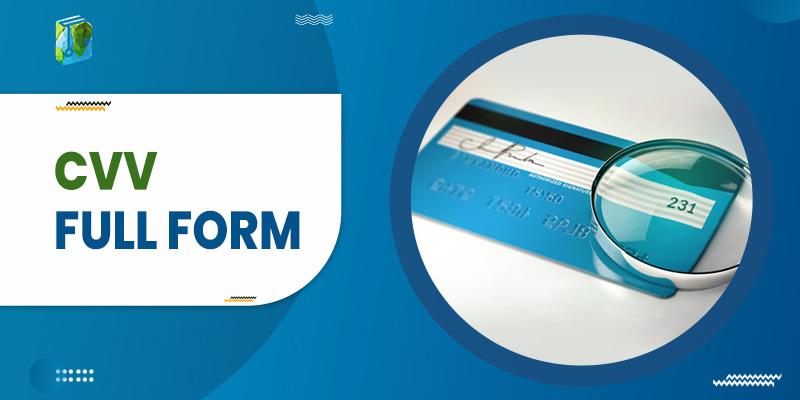CVV full form is Card Verification Value. It is an essential authentication feature provided by all financial institutions that issue credit or debit cards to establish one’s identity. This article on the full form of CVV contains detailed information about the usage, purpose, and drawbacks.
CVV Full Form
It acts as an extra layer of security on the card, aiding in minimizing the risk of theft and fraud that may exist during any monetary transactions carried out by using the card. It is a combination of three digits or a three-digit number printed on the right side of the signature strip on the back side of the credit/debit cards.
American Express cardholder (AMEX) finds this code in a four-digit number on the front of the card just above and to the right of the card number. Each credit card company has its name for the CVV code, e.g. VISA calls this code CVV2, whereas MasterCard calls it CVC2 and American Express calls it CID.
CVV number differs from the PIN (personal identification number), like a password to complete card transactions. The PIN is used when the cardholder can present the card for the transaction for example in restaurants or retail shopping for making payments. CVV number is required while shopping online or making online payments as here cardholder cannot present the card. Your data is protected by a digital certificate certified Secure Socket Layer (SSL) when you submit your credit card information.
Purpose of CVV
- It is required to complete transactions using cards and provides added security against but also provides added security against scams as the CVV number is never transferred to any other party.
- It verifies that the card is physically available with the individual using it during the transaction. If a person other than the cardholder knows the card number and some personal information of the cardholder, he will not be able to conduct any transaction on behalf of the cardholder.
- Debit and credit cards are used for online transactions and virtual payment gateways. These portals are not permitted to save any information about the CVV number of the cardholder since it is against the Per Payment Card Industry Data Security Standards. Hence, despite having all the other details of the card, the vendor cannot access the CVV.
Drawbacks of CVV
If a fraudster completely copies the magnetic stripe of a debit/credit card and has access to the CVV code as well, then the card can be easily misused. Also, if someone, being unaware of the purpose, gives away the information to a scammer, he/she may lose a major amount of his/her bank balance. In this case, the bank owes no obligation to the cheated cardholder.
Conclusion
CVV full form is Card Verification Value. It is an essential authentication feature provided by all financial institutions that issue credit or debit cards to establish one’s identity. Here is the purpose of CVV and its disadvantages, and more in detail.
People Also Reading:

